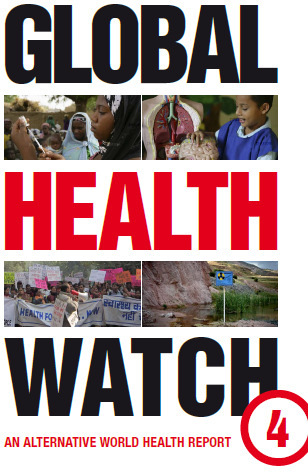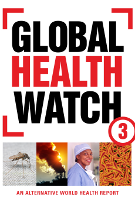13.05 Global immunization vision and strategy
The Assembly will consider a report from the Secretariat (A64/14) summarizing the report on the global immunization vision and strategy noted by the Executive Board at its 128th session in January 2011 and proposing the strategic directions for achieving the relevant vaccine and immunization goals during the period designated as the Decade of Vaccines 2011–2020.
See also WHO's Immunisation Page.
See Notes from EB Watch (Jan 2011) including
- extract regarding this topic from letter sent by PHM to EB members before the EB meeting
- abstract from MSF (2010) Report, 'Giving developing countries the best shot'
WHO Watch Comment:
Although immunization coverage did increase during the reference time of 2000-2009, ideal coverage of 90% has not yet been achieved. Instead of simply considering technical issues as possible cause of this lack of coverage, WHO must recognize the important role social determinants of health play in achieving desired outcomes. Immunization programs need to be locally responsive and include actions on structural determinants of health.
In this context, the absence of information on the effectivity of immunization in malnourished populations is especially worrisome . At the moment, there is no informative data from sound research available on this crucial issue. WHO as a knowledge institution of health in its advising role to the international community has the responsibility to make sure such essential questions are being answered and shaping the design of policies.
The strategy mentions monitoring and surveillance of immunization but should also include reference to the monitoring of adverse events in the use of vaccines. Likewise, issues as the promotion of safe injection, proper storage of vaccines and ensuring appropriate compensation mechanisms for adverse events should also be included into the strategy.
It is positive that the necessity to design specific approaches for the increased vaccination of other target groups than infants (pre-school children, adolescents , health care workers) is being highlighted . Still, it must not be forgotten that the promotion of vaccination on target populations other than infants also represents an appealing opportunity for the industry to increase its margin.
A ‘one-size-fits-all’ approach in the introduction of new vaccines must be avoided. National priorities are not everywhere the same. The introduction of new vaccines should be subject to detailed needs assessment studies, cost-benefit analyses and public health impact assessments which recognize the specific circumstances of each member state. WHO should assist member states in undertaking such studies where appropriate. Similar to the vaccination of other people than infants, the introduction of new vaccines cannot be a strategy for increasing industrial margin, but must be a complementary, responsive and locally adequate tool to improve public health.
It is recognized that effective and efficient vaccine delivery requires and should be mediated through well functioning health systems. It is less widely recognized that a pre-occupation with immunization delivery can disrupt health care delivery with serious negative consequences. WHO must ensure that immunization campaigns do not decrease the availability and quality of health care.
While Global Alliance on Vaccines and Immunizations (GAVI) may subsidize the cost of new vaccines for a few years, the capacity of member states to carry those costs in the longer term once the new vaccines have become part of their routine national health strategy needs to be considered. The projected costs of a full course of vaccination (para 25) underlines the importance of affordability.
The strategy also lacks any reference to the valid contribution of community health workers, a functioning primary health care system and the active inclusion of communities in the process.
There is also no mention made about the importance to enhance local capacities, strengthening the vaccine delivery system and promote scientific research. Creating new knowledge is not a western privilege. Building research and manufacturing capacity in the public sector is needed so governments are not over-reliant on the private vaccine industry and biotech industry.
Sustainability is a key criterion in the financing of immunization programs. Member states should be given technical assistance with respect to using the flexibilities provided under the Trade Related aspects of Intellectual Property Rights (TRIPS) Agreement to ensure affordability of vaccines.




